
Annual Review of Physical Chemistry
Scope & Guideline
Unveiling the Latest Trends in Physical Chemistry Research
Introduction
Aims and Scopes
- Molecular Dynamics and Interfacial Chemistry:
Research focusing on the behavior of molecules at interfaces, including metal-oxide interactions and aqueous systems, emphasizing the dynamical processes influencing chemical reactivity. - Spectroscopy Techniques and Applications:
Advancements in spectroscopic methods, particularly at the nanoscale and under extreme conditions, aimed at elucidating molecular structures, dynamics, and interactions. - Machine Learning and Computational Chemistry:
Utilization of machine learning algorithms to enhance computational methods for predicting chemical properties and reaction dynamics, representing a growing intersection between computer science and physical chemistry. - Nanotechnology and Material Science:
Exploration of materials at the nanoscale, including their optical, electronic, and catalytic properties, with a focus on applications in energy and environmental science. - Reaction Dynamics and Kinetics:
In-depth studies of chemical reaction mechanisms, kinetics, and pathways, including the use of advanced simulation techniques and experimental methods to understand complex chemical processes.
Trending and Emerging
- Integration of Machine Learning in Chemistry:
The application of machine learning techniques to predict chemical behavior and optimize reaction conditions has surged, signifying a transformative shift in computational chemistry. - Ultrafast Spectroscopy and Dynamics:
Research focusing on ultrafast processes in chemical reactions has gained momentum, driven by technological advancements that allow for real-time observation of molecular events. - Nanomaterials and Their Applications:
There is an increasing focus on the properties and applications of nanomaterials, particularly in energy conversion and environmental remediation, highlighting their significance in solving global challenges. - Interdisciplinary Approaches in Physical Chemistry:
The blending of physical chemistry with biology, materials science, and environmental science is on the rise, showcasing the importance of collaborative research in addressing complex scientific problems. - Advanced Simulation Techniques:
Emerging simulation methodologies, including path integral and coarse-grained simulations, are becoming more prevalent, reflecting a trend toward more sophisticated modeling of chemical systems.
Declining or Waning
- Classical Theories of Chemical Reactions:
There has been a noticeable decrease in publications focusing solely on classical models of chemical reactions, as newer methodologies, such as quantum mechanical approaches and machine learning, take precedence. - Traditional Spectroscopic Techniques:
The frequency of papers employing conventional spectroscopic methods has waned, with researchers increasingly favoring novel techniques that provide deeper insights into molecular behavior under varied conditions. - Basic Theoretical Frameworks without Computational Advances:
Papers that rely solely on established theoretical frameworks without incorporating recent computational advancements are becoming less common, as interdisciplinary approaches gain traction.
Similar Journals
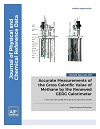
JOURNAL OF PHYSICAL AND CHEMICAL REFERENCE DATA
Empowering Research Through Reliable Reference DataThe Journal of Physical and Chemical Reference Data, published by AIP Publishing, stands as a pivotal resource in the fields of chemistry and physical sciences. With an ISSN of 0047-2689 and E-ISSN 1529-7845, this journal has been diligently curating and disseminating essential reference data since its inception in 1972. Covering a wide array of topics, it is classified in the top quartile (Q1) for miscellaneous chemistry and holds commendable standings in physical and theoretical chemistry, as well as general physics and astronomy, according to the latest Scopus rankings. Researchers and professionals rely on its comprehensive and accurate data to advance their work, making it an indispensable resource for academia and industry alike. While the journal does not currently offer open access options, its rigorous peer-review process ensures that each contribution maintains the highest scholarly standards, catering to a global audience dedicated to the advancement of physical and chemical knowledge.

INTERNATIONAL REVIEWS IN PHYSICAL CHEMISTRY
Shaping the Future of Physical Chemistry ScholarshipInternational Reviews in Physical Chemistry, published by Taylor & Francis Ltd, is a leading journal dedicated to the advancement of knowledge in the field of physical and theoretical chemistry. With an impressive Scopus Rank of 13 out of 189 in its category and a Q2 quartile ranking in 2023, this journal provides a vital platform for researchers, professionals, and students to disseminate and engage with groundbreaking research findings. Since its inception, covering a converged period from 1981 to 2023, the journal has consistently offered comprehensive reviews and original research articles that address crucial advances and contemporary debates in physical chemistry. While not an open-access journal, it maintains accessibility through its robust publication standards and esteemed editorial board. Given its impact and relevance, International Reviews in Physical Chemistry is indispensable for anyone involved in the chemical sciences, facilitating a deeper understanding of complex physical principles and their applications.

JOURNAL OF STRUCTURAL CHEMISTRY
Bridging Innovation and Tradition in Structural ChemistryThe JOURNAL OF STRUCTURAL CHEMISTRY, published by PLEIADES PUBLISHING INC, is a premier resource in the fields of Inorganic Chemistry, Materials Chemistry, and Physical and Theoretical Chemistry. Established in 1960, this journal has been providing a platform for groundbreaking research, facilitating the advancement of knowledge and innovation up to the year 2024. With an ISSN of 0022-4766 and an E-ISSN of 1573-8779, this journal strives to maintain high academic standards, as evidenced by its quartile rankings in 2023, where it ranks Q4 across various chemistry categories. While it currently does not offer open access, the journal's insightful articles are crucial for professionals and students seeking to enhance their understanding and expertise in structural chemistry. Subscribers can expect a comprehensive collection of peer-reviewed research, empirical findings, and theoretical discussions that contribute significantly to the scientific community. With its strong historical foundation and ongoing commitment to quality, the JOURNAL OF STRUCTURAL CHEMISTRY continues to be an essential resource for those passionate about the complexities of structural chemistry.
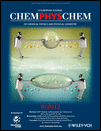
CHEMPHYSCHEM
Fostering High-Impact Discoveries in Theoretical and Experimental ScienceCHEMPHYSCHEM, published by WILEY-V C H VERLAG GMBH in Germany, stands as a pivotal resource for researchers and professionals in the fields of Atomic and Molecular Physics, as well as Physical and Theoretical Chemistry. With a commendable impact across its converged years from 2000 to 2024, the journal is categorized in the second quartile (Q2) for both aforementioned fields according to the 2023 metrics, underscoring its significance in advancing scientific dialogue and research. CHEMPHYSCHEM is committed to disseminating high-quality, peer-reviewed research articles that delve into the intricate interplay between chemistry and physics, making it an essential read for students and experts alike. The journal does not currently offer open access options, allowing for focused scholarly discussions that cater to the academic community's needs. As reflected in its Scopus rankings, CHEMPHYSCHEM maintains respectable standings, ranking #84/224 and #90/189 in its respective categories, demonstrating its commitment to high-impact research and innovation.

Russian Journal of Physical Chemistry B
Advancing the frontiers of physical chemistry.Russian Journal of Physical Chemistry B, published by MAIK NAUKA/INTERPERIODICA/SPRINGER, serves as a vital platform for the dissemination of novel research in the field of physical and theoretical chemistry. With an ISSN of 1990-7931 and an E-ISSN of 1990-7923, this journal has established itself in the academic landscape since its inception in 2008, continuing to publish groundbreaking studies that push the boundaries of chemical research through 2024. Ranked in the Q3 category in Physical and Theoretical Chemistry, it holds a Scopus Rank of 139/189, showcasing its significance despite a competitive field. The journal does not currently offer open access but remains dedicated to advancing knowledge and innovation within its niche, fostering collaboration among chemists, researchers, and educators. As a valuable resource for those seeking to stay abreast of the latest developments and theoretical advancements, the Russian Journal of Physical Chemistry B is an excellent choice for professionals and students alike.

Physical Chemistry Research
Advancing the frontiers of physical chemistry research.Physical Chemistry Research, published by the Iranian Chemical Society, is an esteemed academic journal dedicated to advancing knowledge within the fields of *Fluid Flow and Transfer Processes*, *Physical and Theoretical Chemistry*, and *Statistical and Nonlinear Physics*. Since its inception in 2013, the journal has established a crucial platform for researchers, professionals, and students to share innovative findings and methodologies, enhancing collaboration and knowledge dissemination in the physical chemistry community. With impactful contributions recognized in Quartile 3 and Quartile 4 classifications across various categories, the journal is positioned to cultivate emerging research trends as it continues to converge through 2024. Researchers can benefit from diverse perspectives on crucial phenomena in physical chemistry, as the journal is indexed in prominent databases, further increasing accessibility and visibility. The *open access* policy ensures that cutting-edge research remains available to a broad audience, promoting the growth of the discipline globally.

THEORETICAL CHEMISTRY ACCOUNTS
Connecting Scholars in the Realm of Theoretical ChemistryTHEORETICAL CHEMISTRY ACCOUNTS is a prestigious journal dedicated to promoting the advancement of theoretical and computational chemistry. Published by Springer, this journal has become a vital resource for researchers, professionals, and students seeking to explore innovative theoretical approaches in chemistry since its inception in 1996. With a current impact factor positioning it in the Q3 category of Physical and Theoretical Chemistry, it underscores its importance in the academic landscape, ranking 113 out of 189 in its field according to Scopus. The journal embraces an Open Access model, making cutting-edge research widely accessible to the global community. Researchers are encouraged to submit their latest findings and theoretical advancements, contributing to the ever-expanding body of knowledge within this dynamic field. Addressing contemporary challenges and breakthroughs, THEORETICAL CHEMISTRY ACCOUNTS serves as an essential platform for dialogue and discovery among scholars dedicated to the intersection of chemistry and theory.
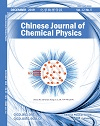
CHINESE JOURNAL OF CHEMICAL PHYSICS
Exploring the Dynamic Landscape of Chemical PhysicsChinese Journal of Chemical Physics, published by the Chinese Physical Society, serves as a pivotal platform for advancing the field of chemical physics, encompassing groundbreaking research and innovative methodologies since its inception in 2000. With an ISSN of 1674-0068 and E-ISSN of 2327-2244, the journal has established itself within the academic community, reflected in its 2023 classification as Q3 in Physical and Theoretical Chemistry and a Scopus rank of #142 out of 189, representing the 25th percentile in this competitive field. Although it does not currently operate as an open-access publication, its commitment to disseminating pivotal scientific research continues to attract scholars and professionals alike. The journal aims to bridge the gap between theoretical principles and practical applications in chemical physics, thereby fostering collaboration and innovation. By contributing significantly to the discourse in this dynamic domain, the Chinese Journal of Chemical Physics remains an essential resource for researchers, professionals, and students eager to stay abreast of contemporary developments.
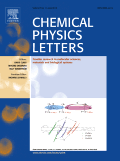
CHEMICAL PHYSICS LETTERS
Innovating Knowledge in Chemical Physics Since 1967CHEMICAL PHYSICS LETTERS, published by Elsevier, is a prestigious journal that has been at the forefront of advancing knowledge in the fields of physical and theoretical chemistry and physics since its inception in 1967. With an impressive impact factor reflective of its high-quality research output, this journal holds Q2 quartile rankings in both the Physical and Theoretical Chemistry and Physics and Astronomy categories for 2023. It is recognized as a key platform for disseminating groundbreaking findings, with Scopus rankings placing it within the top 76th and 66th percentiles in its respective categories. Researchers and professionals benefit from its insightful contributions and rigorous peer-review process, making it an essential resource for those engaged in cutting-edge chemical physics studies. Although the journal is not open access, it remains accessible through various institutional subscriptions, ensuring that a wide audience can explore its wealth of knowledge. Located in Amsterdam, Netherlands, the journal continues to drive innovation and collaboration across diverse scientific disciplines.
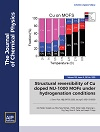
JOURNAL OF CHEMICAL PHYSICS
Fostering Knowledge in the Heart of Chemical ScienceJOURNAL OF CHEMICAL PHYSICS, published by AIP Publishing, stands as a premier scholarly source within the realms of physical and theoretical chemistry, as well as physics and astronomy. With an enduring history dating back to 1933 and converging until 2024, this journal has established itself as a cornerstone of the scientific community, evidenced by its prestigious Q1 categorization in multiple fields, including medicine and general physics. It is ranked 37th out of 243 in the general physics and astronomy category and holds a commendable 39th position in physical and theoretical chemistry according to Scopus rankings, highlighting its significant impact in these disciplines. Although not an open-access journal, it caters to a wide audience of researchers, professionals, and students seeking to deepen their understanding of the interactions and dynamics of chemical systems. With its expertly curated content, the JOURNAL OF CHEMICAL PHYSICS continues to play a vital role in advancing knowledge and fostering innovation across its core subjects.